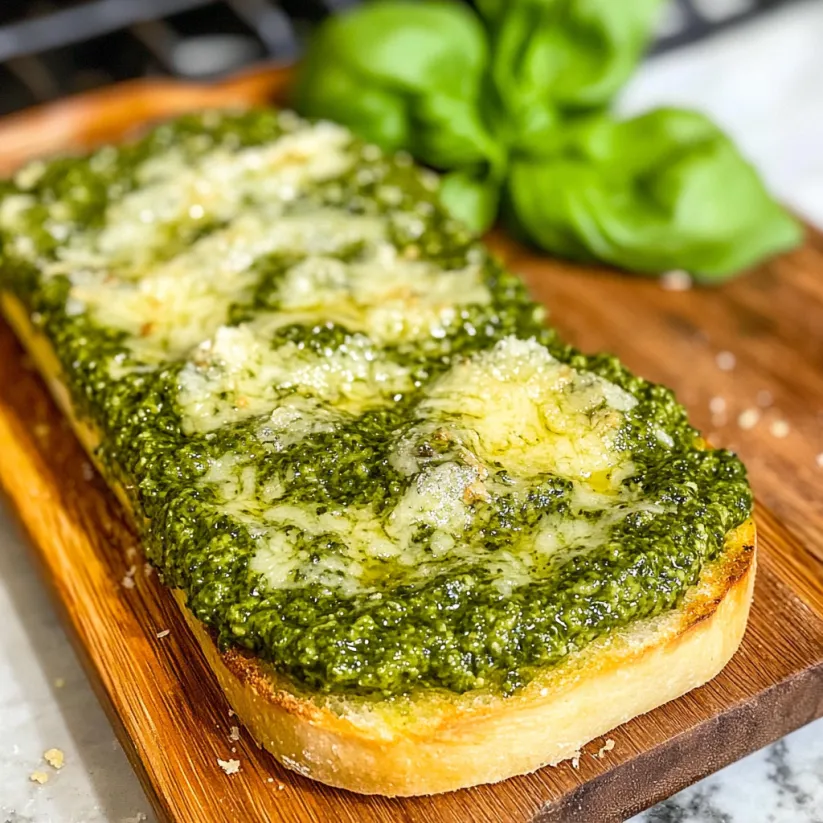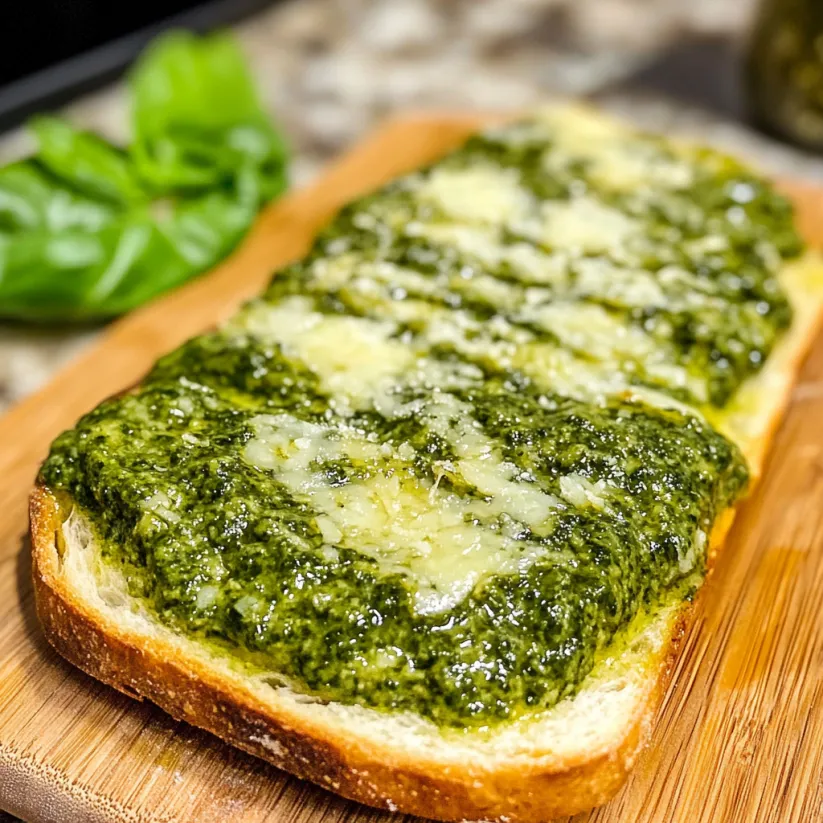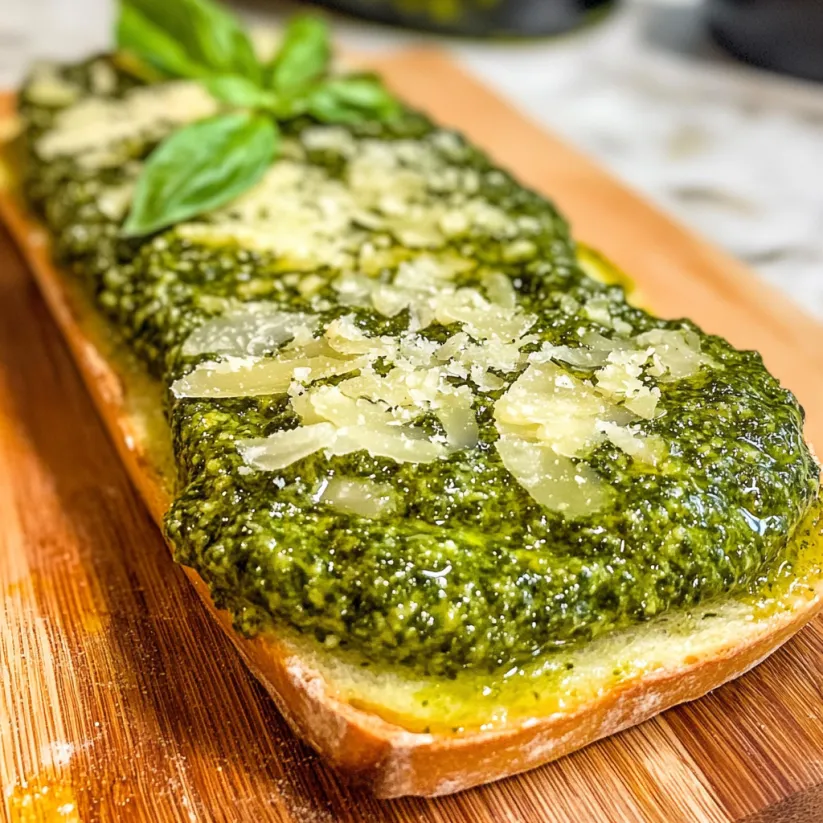 Save Pin
Save Pin
This easy homemade pesto will transform how you think about this classic Italian sauce. Fresh basil combined with toasted pine nuts, garlic, and Parmesan creates a vibrant green sauce that outshines any store-bought version. After making this simple recipe, you'll wonder why you ever settled for less.
I first made this pesto when my garden was overflowing with basil, and now I keep a batch in my freezer year-round. My family requests it weekly, especially tossed with fresh pasta or spread on crusty bread for impromptu appetizers.
Ingredients
- Fresh basil packed with aromatic oils that give pesto its signature flavor and bright green color
- Pine nuts that add a buttery richness and subtle sweetness when toasted
- Parmesan cheese providing a salty umami depth that balances the herbal notes
- High quality olive oil creating the silky texture and carrying the flavors throughout
- Fresh garlic cloves offering pungent warmth that mellows slightly in the finished sauce
- Salt and pepper for enhancing all the other flavors
Step-by-Step Instructions
- Toast the Pine Nuts
- Heat a small dry skillet over medium heat and add the pine nuts. Watch them carefully as they toast for 2 to 3 minutes, stirring frequently. They should become fragrant and golden brown but can burn quickly. Allow them to cool slightly before proceeding.
- Blend the Ingredients
- Add the toasted pine nuts, fresh basil, grated Parmesan, olive oil, garlic cloves, salt and pepper to your food processor. Pulse in short 5 to 10 second bursts initially to break everything down evenly. Continue processing until you achieve a relatively smooth consistency with small flecks of basil still visible.
- Taste and Adjust
- Sample your freshly made pesto and adjust the seasonings according to your preference. Add more salt or pepper if needed, or incorporate additional olive oil if you prefer a thinner consistency. Remember that flavors will develop further as it sits.
 Save Pin
Save Pin
Watching my daughter dip her first piece of focaccia into this vibrant green sauce remains one of my favorite kitchen memories. The fresh basil is truly the star ingredient here—I grow several varieties in my garden specifically for making batches of this pesto throughout summer.
Make It Your Own
This classic pesto recipe follows traditional Ligurian methods, but countless delicious variations exist. Try substituting half the basil with baby spinach for a milder flavor, or replace pine nuts with walnuts or pistachios for different nutty undertones. For a dairy-free version, nutritional yeast provides a similar umami quality without the Parmesan.
Storage Solutions
Pesto darkens when exposed to air, so always store it with a thin layer of olive oil on top to preserve that vibrant green color. Keep refrigerated in an airtight container for up to a week. For longer storage, freeze pesto in ice cube trays then transfer the frozen cubes to freezer bags for individual portions that last up to three months.
Beyond Pasta
While pesto is divine tossed with hot pasta, its versatility extends much further. Spread it on sandwiches instead of mayo, swirl into soups just before serving, dollop onto roasted vegetables, or mix with softened butter for an incredible compound butter to top grilled meats. Even a small amount adds tremendous flavor to scrambled eggs or homemade pizza.
 Save Pin
Save Pin
Commonly Asked Questions
- → Can I substitute pine nuts with other nuts?
Yes, you can substitute pine nuts with walnuts, almonds, pistachios, or even sunflower seeds. Just remember to toast whatever nut or seed you choose to enhance the flavor before blending.
- → How long does homemade pesto last?
Homemade pesto keeps in an airtight container in the refrigerator for up to 1 week. For longer storage, freeze it in ice cube trays, then transfer the frozen cubes to a freezer bag where they'll stay good for up to 3 months.
- → What can I do if my pesto is too thick?
If your pesto is too thick or difficult to blend, add a few tablespoons of water or extra olive oil and pulse again. This will help achieve a smoother consistency without compromising flavor.
- → What dishes can I use pesto with?
Pesto is incredibly versatile. Use it to dress pasta, spread on sandwiches or pizza, mix into soups, dollop on roasted vegetables, stir into risotto, or add to dressings and marinades. It also makes a delicious topping for grilled chicken or fish.
- → Why should I toast the pine nuts?
Toasting pine nuts releases their natural oils and enhances their nutty flavor, adding depth to the pesto. It only takes 2-3 minutes in a dry skillet, but watch them carefully as they burn quickly.
- → Can I make pesto without a food processor?
Yes, traditional pesto was made with a mortar and pestle, which actually produces a more rustic texture many prefer. You can also use a blender, though you may need to add the ingredients in stages and use the pulse function.
